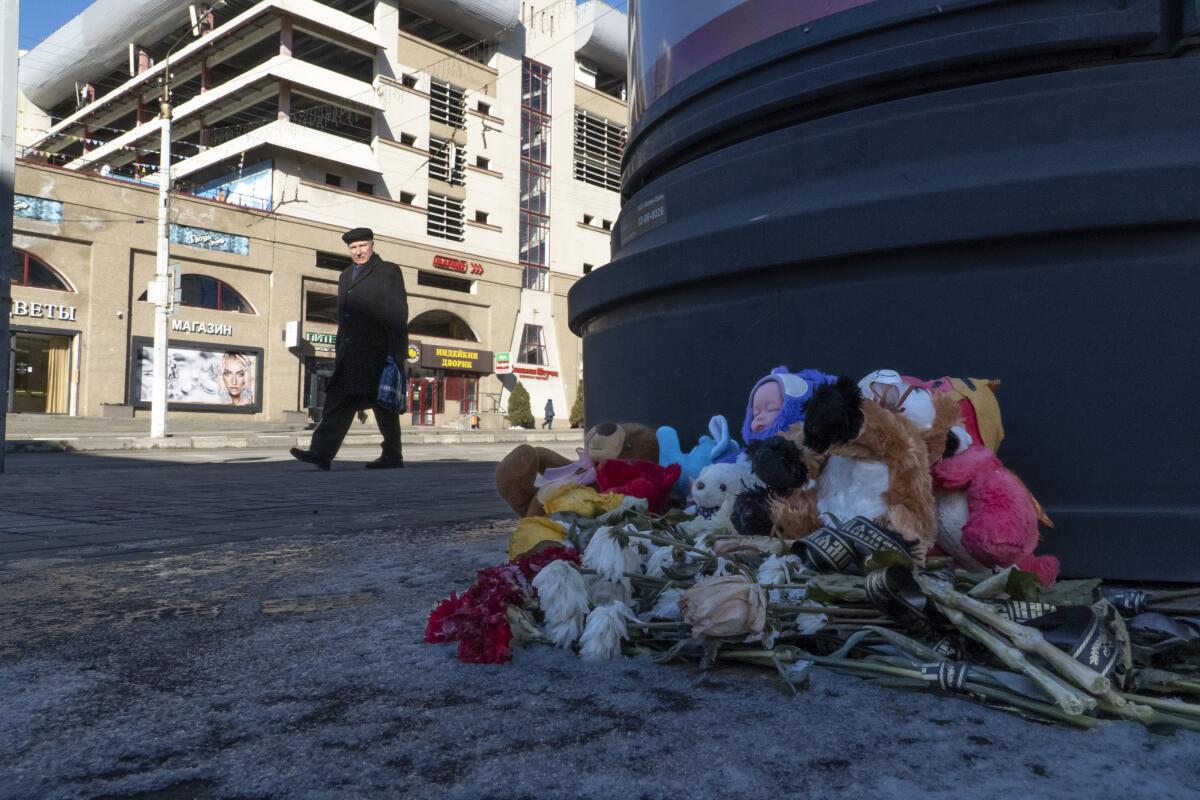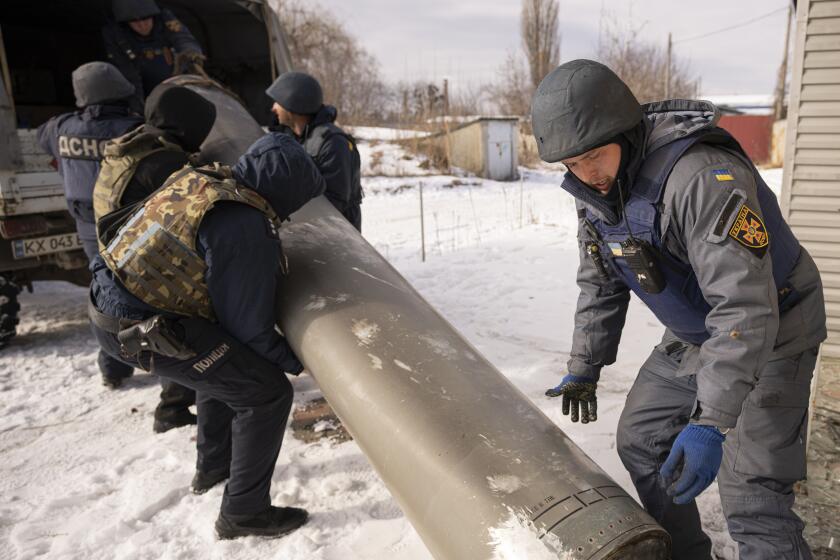Russia’s forces turn their focus on Ukraine’s northeast in what may be an ambitious new push

- Share via
KYIV, Ukraine — Russian forces are probing Ukrainian defenses for weak points in the country’s northeast, an official said Thursday, an area where analysts believe the Kremlin seeks to build on its recent success in taking a key city by mounting an ambitious four-pronged offensive to break through the front line.
Russia overwhelmed Ukraine’s army in Adviidka, a strategic eastern city, where it brought to bear its significant battlefield advantage in men, aircraft and artillery. Emboldened by its first major triumph in the war in nine months, Moscow appears determined to leverage its superiority as it shifts its economy onto a war footing.
Russian President Vladimir Putin took a co-pilot’s seat to fly in a Tu-160M strategic bomber Thursday after visiting an aircraft manufacturing plant in Kazan, a city east of Moscow.
Kyiv officials have pleaded with Ukraine’s Western partners to accelerate delivery of military aid so its forces can hold out against the onslaught. The front line running more than 600 miles across eastern and southern Ukraine has not shifted much in the run-up to the war’s two-year anniversary on Feb. 24.
Ukrainian President Volodymyr Zelensky is urging Western allies to quicken their military support for Ukraine in order to repel Russia’s invasion.
Moscow’s troops are driving forward around Lyman and Kupiansk, in the Kharkiv region that borders Russia, ignoring casualties or equipment losses, according to Illia Yevlash, spokesperson for the operational group overseeing the eastern front line.
“Despite the enormous losses, which the enemy does not take into consideration, it is constantly replenishing its reserves,” Yevlash said on Ukrainian television.
The Russians are attacking in strength along four parallel axes in the northeast, “likely reflective of a wider operational objective and higher-level operational planning,” the Institute for the Study of War said.
Russia’s longer-term goal with the coordinated — and probably months-long — offensive could be to prepare a platform for pressing deeper intro the Ukraine-held western part of the Donetsk region and also penetrating into the Kharkiv region north of it, the Washington-based think tank said late Wednesday.
But it noted that Russia is replenishing its losses with poorly trained troops and that its forces likely can’t advance quickly enough to surround pockets of Ukrainian defenders.
War wounds and traumatic captivity, cherry liqueur and air-raid alerts: Weathering the year-old Russian invasion
In other developments:
The Ukrainian armed forces claimed to have struck a Russian military training ground behind the front line, in the partly occupied Kherson region. Around 60 Russian soldiers were killed, according to Natalia Humeniuk, spokesperson for Ukraine’s Southern Operational Command.
Also, Security Service of Ukraine, known as SBU, said it found evidence Russia is using Hwasong-11 ballistic missiles from North Korea. More than 20 of the missiles have been used in attacks on Ukraine, it said.
Meanwhile, Denmark announced another joint European military aid package to Ukraine of 1.7 billion kroner ($247 million). The donation includes 15,000 artillery shells, as well as drones and air defenses, Danish Defense Minister Troels Lund Poulsen said.
The British government slapped Russia with 50 new sanctions aimed at those supplying Russia’s military with munitions such as rocket launch systems, missiles and explosives. The measures also target key sources of Russian revenue in metals, diamonds and energy trading.
Associated Press writers Jan M. Olsen in Copenhagen, Denmark, Pan Pylas in London and Barry Hatton in Lisbon, Portugal, contributed to this report.
More to Read
Sign up for Essential California
The most important California stories and recommendations in your inbox every morning.
You may occasionally receive promotional content from the Los Angeles Times.















